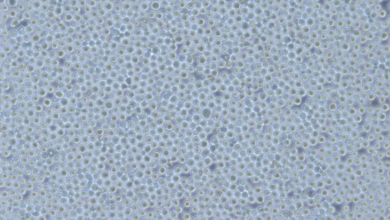Tubal Factor Infertility Explained: Symptoms, Diagnosis & What It Means for IVF

You’ve been trying to conceive for months, or maybe even years, and everything else seems fine. Your cycle is regular, your hormonal levels are balanced, and yet… nothing. For many women, the answer lies not in the ovaries or uterus but in the narrow, often-overlooked fallopian tubes.
Tubal factor infertility accounts for nearly 25–35% of all female infertility cases, making it one of the most common yet misunderstood causes of conception challenges. It often presents no visible signs until investigated closely, and that’s what makes it tricky.
We spoke with the best ivf doctor in noida to understand how blocked fallopian tubes impact fertility, what the symptoms are (if any), how it’s diagnosed, and what treatment paths, including IVF, are available for couples facing this issue. Whether you’re just beginning your journey or searching for answers after failed attempts, this guide will help illuminate the path ahead.
What Is Tubal Factor Infertility?
Tubal factor infertility refers to any condition that prevents the egg from traveling through the fallopian tubes, meeting sperm, and implanting in the uterus. It includes partial or complete blockage, damage, or scarring of one or both tubes.
Without open, functioning fallopian tubes, natural conception becomes either extremely difficult or impossible, because fertilization usually happens inside the fallopian tube.
Fallopian Tube Blockage Symptoms: Why It’s Called a Silent Cause
Most women with blocked tubes experience no symptoms at all, which is why the condition often goes undiagnosed for years. However, depending on the cause, there can be a few subtle signs.
Here are common fallopian tube blockage symptoms to watch for:
- Difficulty conceiving despite regular unprotected sex for 12+ months
- Pelvic pain (especially during periods or intercourse)
- Chronic lower abdominal discomfort
- History of pelvic inflammatory disease (PID)
- Past ectopic pregnancy or abdominal surgery
- Unexplained miscarriage or implantation failure during IVF cycles
If you experience any of these, it’s important to consult a specialist. The best ivf doctor in noida notes that early investigation can save both time and emotional distress.
What Causes Fallopian Tube Blockage?
A number of underlying conditions can damage or block the fallopian tubes, including:
- Pelvic inflammatory disease (PID)
- Endometriosis, where endometrial tissue affects tube function
- Previous ectopic pregnancy, which may require removal of one tube
- Tubal ligation (sterilization) or its reversal
- Post-surgical adhesions (scar tissue from C-sections, appendectomy, etc.)
- Hydrosalpinx, where a tube fills with fluid and swells, often seen in scans
In many cases, the blockage goes unnoticed until routine infertility testing is done,or after a failed IUI or IVF cycle.
Diagnosis: How Do Doctors Detect Blocked Tubes?
Detecting blocked fallopian tubes requires specialized imaging tests. Here are the most common diagnostic tools:
1. Hysterosalpingography (HSG)
A special X-ray where dye is inserted into the uterus and fallopian tubes. If the tubes are open, the dye flows through. If blocked, it stops. HSG is often the first test ordered for women struggling to conceive.
2. Sonohysterography or Saline Infusion Sonogram
Ultrasound imaging is used after saline is injected into the uterus to visualize the cavity and tubes.
3. Laparoscopy
A minimally invasive surgery where a tiny camera is inserted through the abdomen. This is considered the most definitive way to diagnose mild or complex tubal disease, and may also be used to treat blockages.
The best ivf doctor in noida recommends combining HSG with laparoscopy if your initial scan shows abnormal results or if you have a history of pelvic infections.
What Does It Mean for IVF?
The silver lining? IVF bypasses the fallopian tubes entirely. That’s why for many women with tubal factor infertility, IVF offers one of the highest chances of pregnancy.
Here’s how IVF works in this context:
- Ovaries are stimulated to produce multiple eggs
- Eggs are retrieved and fertilized outside the body in a lab
- Embryos are transferred directly into the uterus, bypassing the tubes completely
When Is IVF Recommended?
- Both tubes are completely blocked or removed
- Hydrosalpinx is diagnosed (often requires surgical correction first)
- Other fertility treatments like IUI or ovulation induction have failed
- You’re over 35 and time is of the essence
In such cases, the best ivf doctor in noida may recommend removing the damaged fallopian tubes (salpingectomy) before embryo transfer to increase IVF success rates. This is especially true for patients with hydrosalpinx, which can lower the chances of implantation.
Can Tubal Blockages Be Treated?
In selected cases, tubal surgery may be an option, particularly for:
- Younger women with mild, single-tube blockage
- Women with prior tubal ligation who now want to conceive
- Cases where IVF is not financially or medically viable
However, success rates with tubal surgery are lower than IVF, and there’s a higher risk of ectopic pregnancy. That’s why most fertility experts, including the best ivf doctor in noida, now consider IVF the gold standard for moderate to severe tubal damage.
Emotional Impact & Next Steps
A diagnosis of tubal factor infertility can be emotionally jarring. Many women feel betrayed by their bodies or overwhelmed by the next steps. But the key message here is this condition is both common and treatable.
You’re not alone. And you’re not out of options.
IVF has enabled millions of women with blocked tubes to achieve healthy pregnancies. With the right care plan and a skilled fertility team by your side, your chances are better than ever.
Final Thoughts: Don’t Let Blocked Tubes Block Your Dreams
Tubal factor infertility may feel like an invisible wall, but modern medicine has the tools to climb over it. From early diagnosis to effective IVF strategies, your path to parenthood is still open.
If you’ve been trying to conceive without success and suspect fallopian tube issues, speak to the best ivf doctor in noida for a detailed evaluation. Whether you’re dealing with hydrosalpinx, scarring, or unexplained symptoms, your next step could be the one that changes everything.
FAQs
Q1. What are the most common fallopian tube blockage symptoms?
The most common symptoms include difficulty conceiving, pelvic pain, and a history of PID or ectopic pregnancy. However, many cases show no symptoms at all.
Q2. Can blocked tubes be fixed without IVF?
In some cases, surgical correction may be possible, but IVF is often more successful and less risky in moderate to severe blockages.
Q3. Does having one blocked fallopian tube affect IVF?
Not usually. IVF bypasses the tubes altogether, so even women with both tubes blocked can conceive successfully.
Q4. What is hydrosalpinx and why is it serious?
Hydrosalpinx is a fluid-filled, swollen fallopian tube. It can reduce IVF success rates and often needs to be removed or clipped before embryo transfer.
Q5. When should I see the best ivf doctor in noida for suspected tube issues?
If you’ve been trying to conceive for over 12 months or have a history of pelvic surgery or infections, it’s time to get tested and explore IVF or other treatments.




